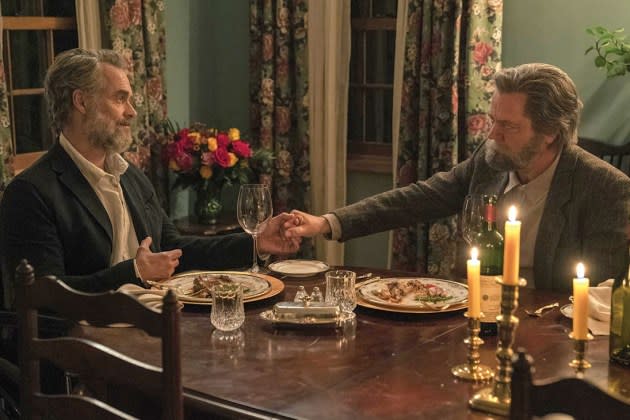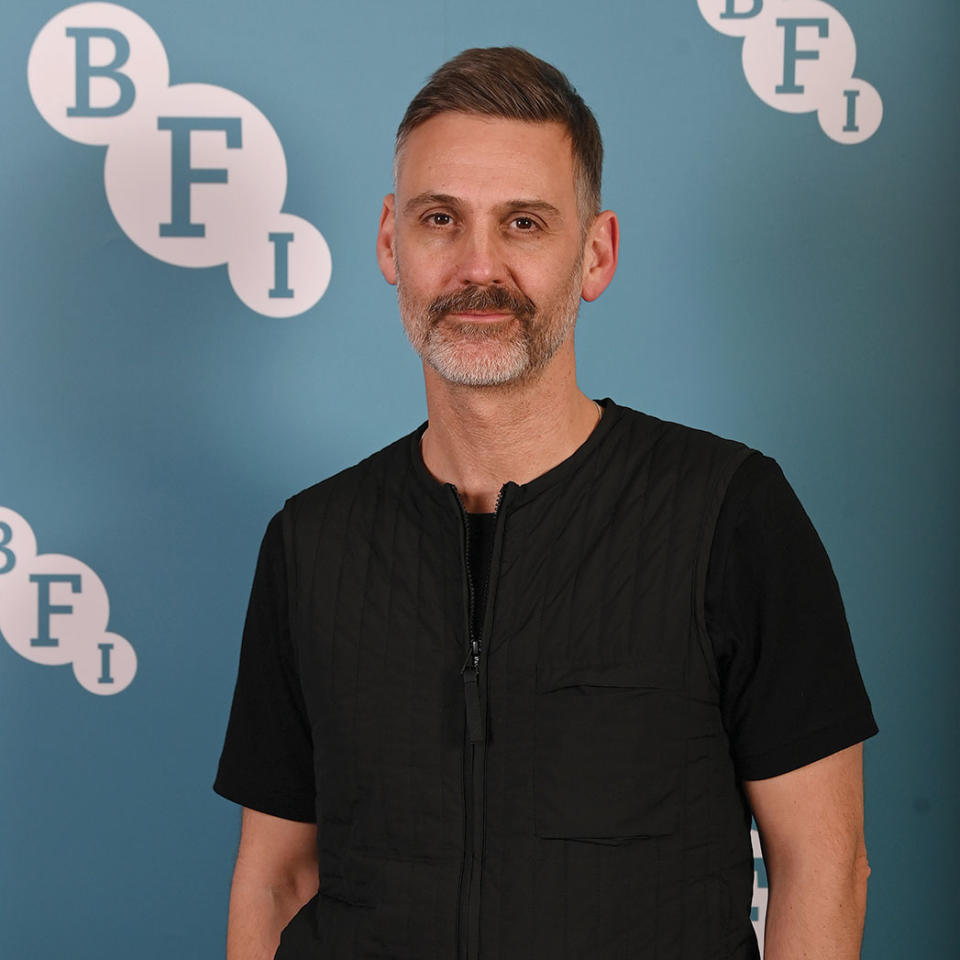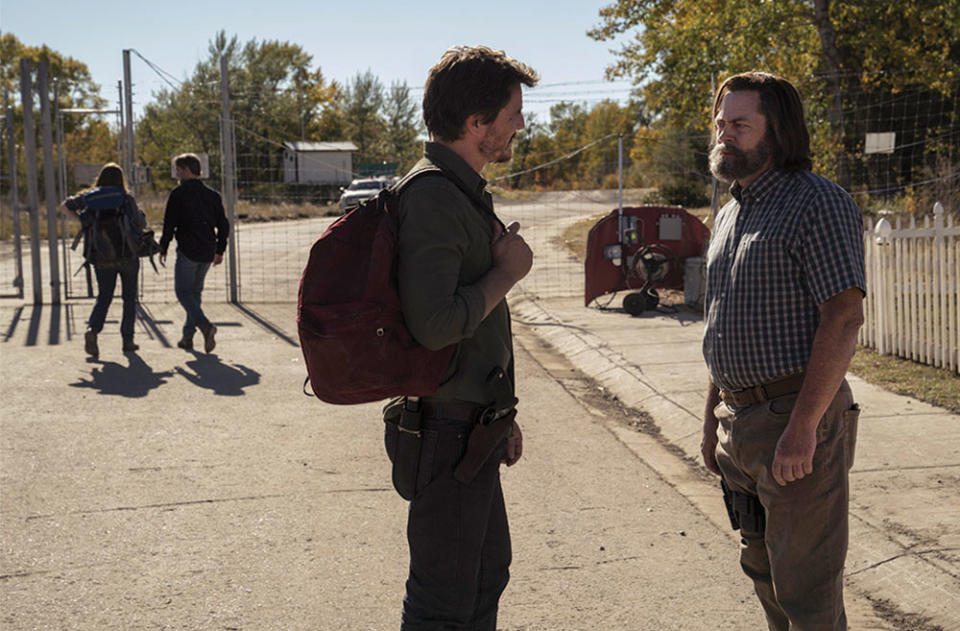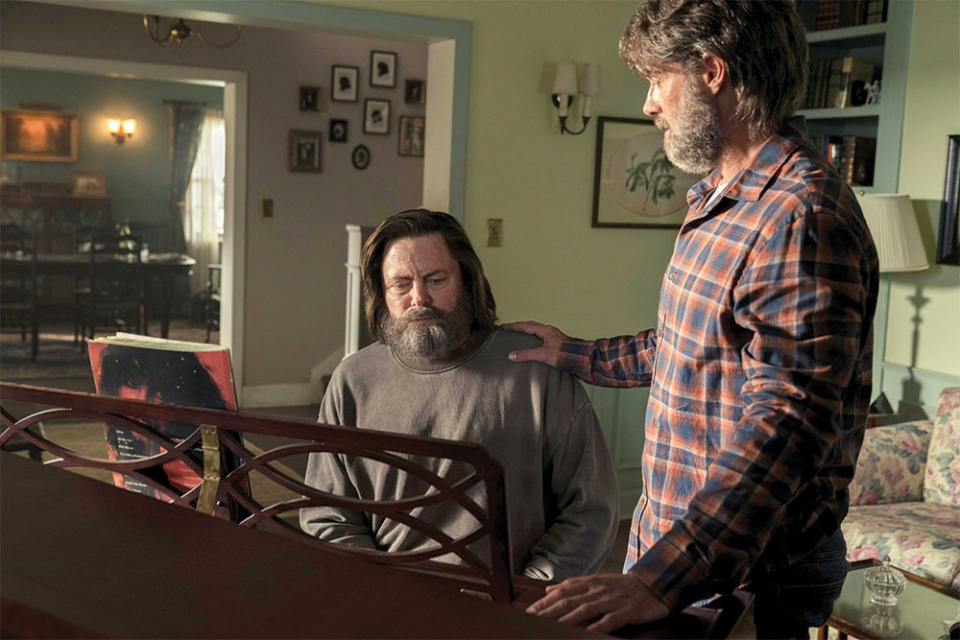‘The Last of Us’ Director Talks Helming a Love Story for the End of the World

Despite the accolades for “Long, Long Time,” the third episode in the debut season of HBO’s The Last of Us, it feels all the more important to note that the decision to veer off course from the apocalyptic narrative in the series’ third week was, at the time, considered a risk. “My episode was [planned as] episode four, which is less of a gamble, when you have it midseason,” explains director Peter Hoar. “But I think that it was such a bold choice that it actually helped the show.”
In the 75-minute departure from the harrowing journey taken by series protagonists Joel (Pedro Pascal) and Ellie (Bella Ramsey), viewers are introduced to a character mentioned only in passing in the video game on which the dystopian thriller is based: survivalist Bill (Nick Offerman), who rescues a lost and hungry Frank (Murray Bartlett) from one of his traps. Over dinner and some Linda Ronstadt, the two fall in love, and the episode follows their relationship over the next decade and a half as they face the various challenges brought on by a deteriorating world.
More from The Hollywood Reporter
Adam Blackstone Is a Musical Multihyphenate Who Is His Own Competition
Feinberg Forecast: Updated Emmy Predictions One Week Before Final Voting Closes

Hoar’s episode has been lauded by critics as not just the best hour of television this year but possibly in television history, something he can’t help but feel humbled about. “These aren’t real people, but what Craig Mazin managed to do is create a story that seemed to be so universal,” says Hoar of the series co-creator and co-writer. “It was about two men, but it didn’t matter. Everybody felt something.”
The Emmy-nominated director spoke to THR about the challenges of creating an episode of a horror series that had “people holding each other a little closer, crying about what they’d seen and about how it made them feel.”
In the original video game, the purpose of the Bill’s Town sequence is for Joel and Ellie to get a car. How did this evolve into the year’s most emotional episode of television?
Craig is a genius with how he puts a story together. I’m a big game fan, and how The Last of Us makes you feel as a game is quite unique because it is so emotional and draining. What Craig managed to do was to keep the essence of the game and embellish it where it could be embellished, to remind everybody why it’s important to survive. Why do we bother at all? He saw Frank and Bill as the first big opportunity to make his mark as a writer in the story and say, “This is why we survive.”

Casting Murray Bartlett seems like an obvious choice in this case, but Nick Offerman maybe less so. What did these two men bring to their roles?
HBO had spoken to Craig and said, “We’ve just worked with this guy called Murray Bartlett on a show called The White Lotus,” — at that point, it hadn’t come out — “You have to meet him. He’ll blow you away.” Murray is not only a sensational actor, he’s a wonderful human being. That was what we needed for Frank. And I do remember the conversations about Nick. Bill and Nick are identical in every respect, except for the fact that Nick is married to a wonderful woman, Megan Mullally. So, we were like, “Let’s trust our gut and know that he is a great individual, a nice, likable person by all accounts.” I certainly was not prepared for how much of a big heart that man has.
I think the two of them together were just dynamite because there’s love everywhere from both of them. [Nick] didn’t say this, but he was doing things that were out of his comfort zone, things he’d never done before, playing a character he’d never played before. And there was Murray, who’d [played queer characters] a lot. He was helping him and guiding him. And the scene where they were in bed together was very much an example of that. Murray’s soul, if you like, kept Nick in place. It made that scene so wonderful and touching.
Was there a scene that made you nervous?
I think we really all wanted that scene in bed to be heartfelt, human and loving.
What were the trepidations there?
On It’s a Sin, we had a lot of scenes where we had an intimacy coordinator, and I had never worked with one before that. It was a phenomenal experience. It was wonderful to have somebody guide those moments emotionally and physically because actors give so much up of themselves. It’s a very vulnerable place. I think sometimes younger actors, particularly, think, “Well, he’s the director. I’ve got to do this.” And that’s never, ever the case.
So here we are with two 50-plus, gray-haired, hairy men in bed together. And again, you can’t assume, “Oh, they’re old, they’ll be fine about it.” So I said, “Look, here’s how I feel about this. You’ve got to feel good.” We called in the intimacy coordinator, and she went, “Everything Peter said was just great,” and I was like, “Oh, good, I’ve learned something.” It’s vitally important, and honestly, that transcends. As actors, they’re exposing themselves by being vulnerable in front of the camera and in front of other people. My job is to capture that and to make them feel that they are able to do it. There are no mistakes — it’s just having a go and then you put all of that together in the big melting pot of the edit and come up with something wonderful. I just want people to feel happy and loved and enabled on set because then they are capable of anything.

The scene at the piano, which comes right before the love scene, must have been quite a delicate dance. The signs are subtle, but you have to believe that by the time Frank kisses Bill, he is not going to shoot him.
Absolutely. It’s a very cleverly written, simple storyline that escalates just enough. And, as you say, it’s really important that Frank knows he’s taking a risk, but it can’t be so much of a risk that he could end up dead. Along the way — and this is something a lot of people spotted — it’s the little signals that Bill doesn’t know he’s giving: the way he puts the plate down, the way he held the bottle, the way he talks about the wine. And looking around, Frank sees a house that is not of Bill’s making. It’s got someone else’s presence, i.e. Bill’s mom. That’s why he’s like, “I know exactly who you are, and I’m going to take a gamble.” It’s his educated guess, but one that he thinks he will succeed with.
Was there a moment during production that took you by surprise?
I was very moved by the final scene around the table. We shot it mostly in order, so when we got to that scene for the last meal, it was phenomenally moving. Murray was in tears. He said, “[Bill taking the poison as well] is the most romantic gesture I could have imagined.” I remember thinking that Murray had been emotional in every take, and — not that I didn’t like it — it was a question of whether or not this is beyond that. That it’s understanding and an acceptance. I gave that note to Murray and he went, “I get it. I’ll try my best. But honestly, I’m feeling this is all happening for real.” And that was just wonderful. I was looking into this guy’s eyes, and it was just so heartbreaking. He was still acting, but he just had completely enveloped himself in that one moment. And then, of course, the two of them working off each other. Nick’s stoicism as Bill. He had the greatest of lines: “This isn’t the tragic suicide at the end of the play. You were my purpose.” It’s just such beautiful stuff.
What is the significance of having a middle-aged gay couple in a show of this scope?
I hadn’t thought about that — I just saw character. Well, obviously, I didn’t think about character enough if I didn’t see that they were both middle-aged. But it was really when I watched the comments coming in — about how important it was to show a middle-aged couple falling in love like that — that I realized it. Lots of people reacted to that in a positive way. Because the story felt so universal, everybody felt it. You don’t see people in their 50s being allowed the space to tell that story. And that was so vitally important. Craig is in his 50s. He said, “I’m not a gay man, but I’ve been in a loving relationship with my wife for 20 years. I know how to tell the story of a loving relationship.” And then there’s me coming at it from my perspective, as a 50-plus gay man who’s also in a loving, married relationship. We all had our stories, and we brought them together with this most perfect of scripts. I loved the response from outside the gay community — because I felt like the gay community was going to like this — but it was when everybody else brought themselves to it, and the love and the passion, that we were like, “Wow, this is really working.”
Interview edited for length and clarity.
This story first appeared in an August stand-alone issue of The Hollywood Reporter magazine. To receive the magazine, click here to subscribe.
Best of The Hollywood Reporter

 Yahoo News
Yahoo News 
